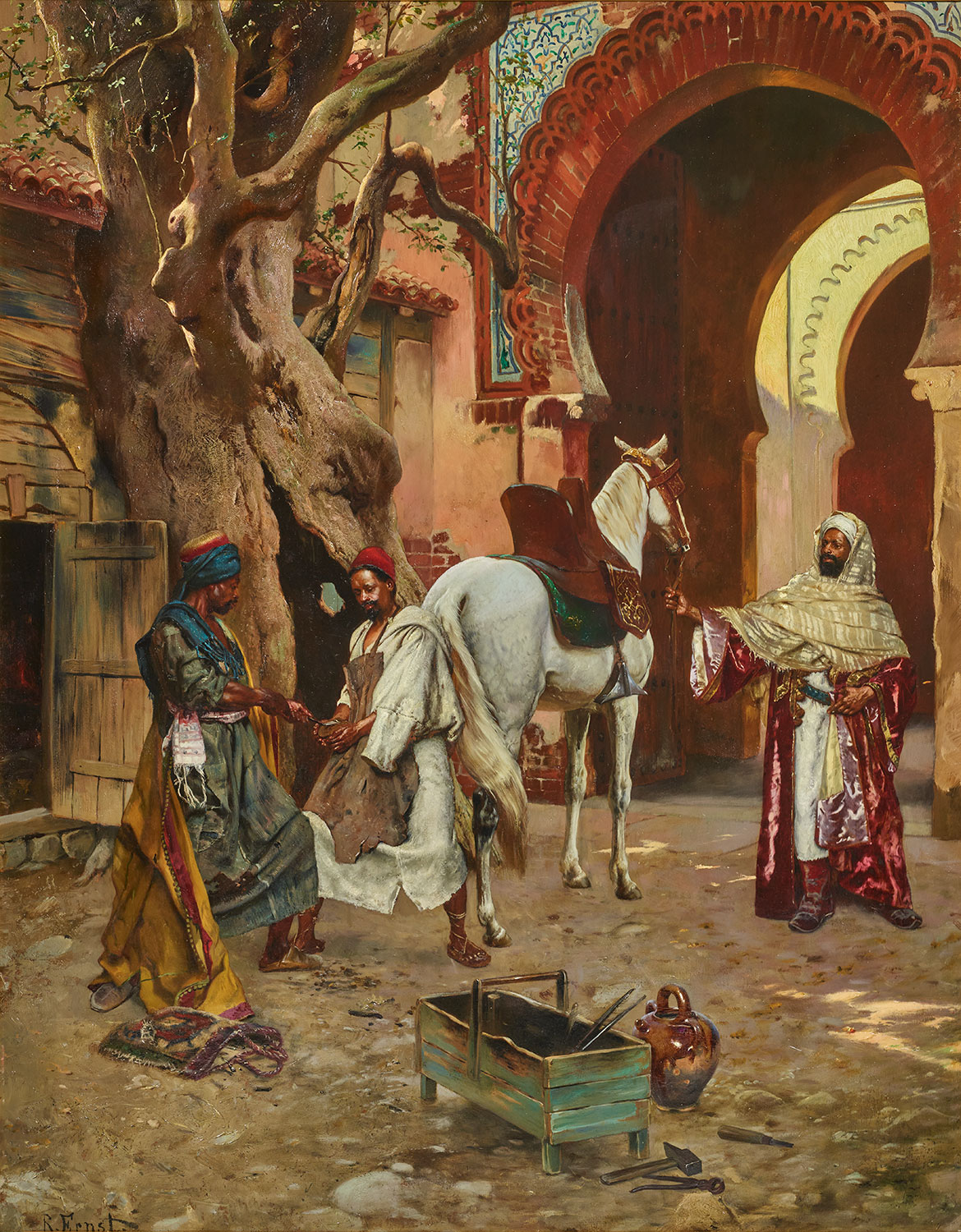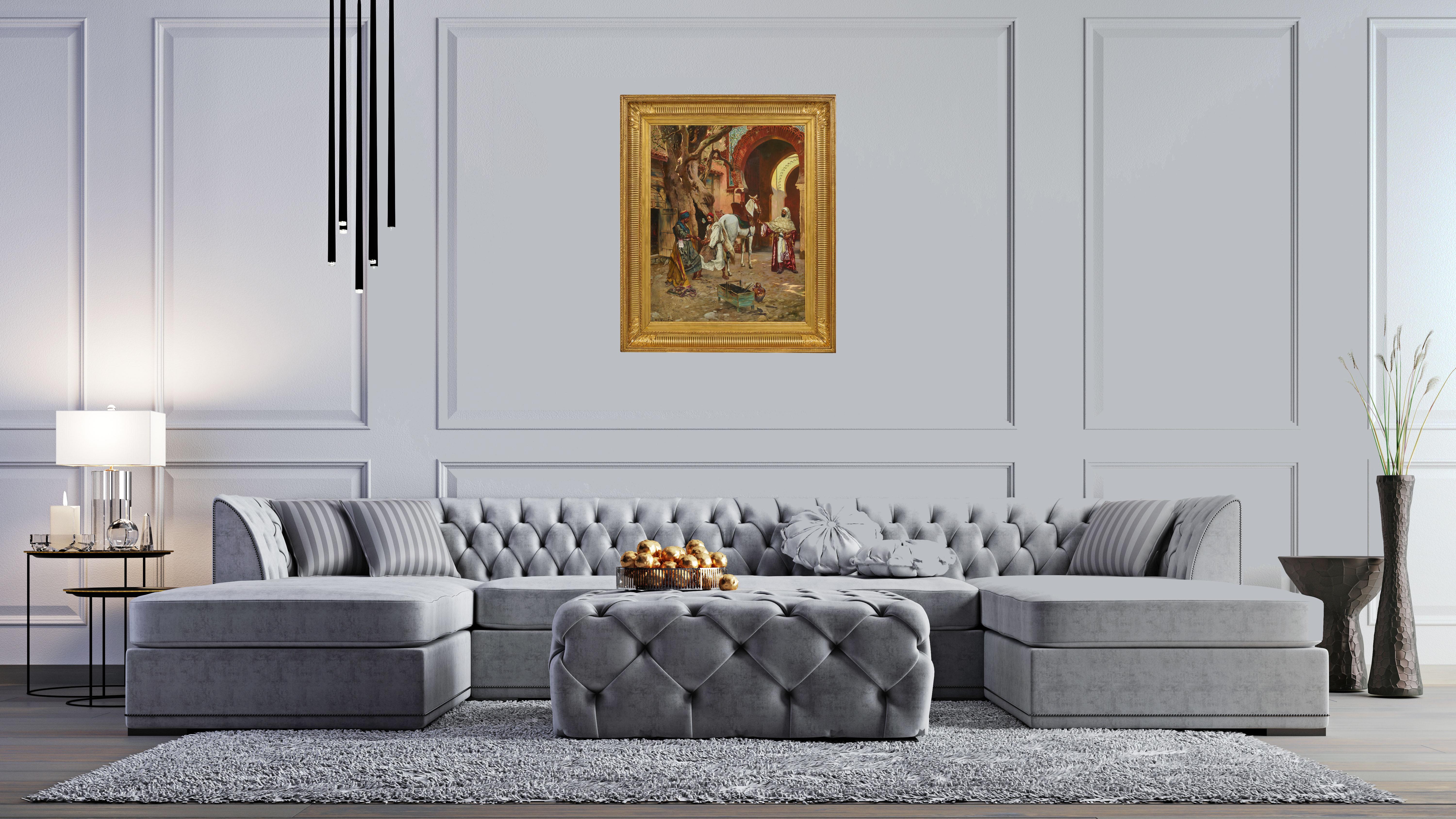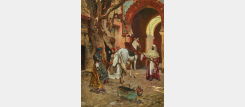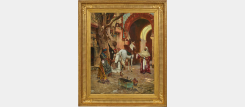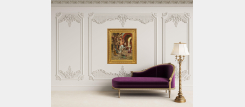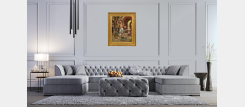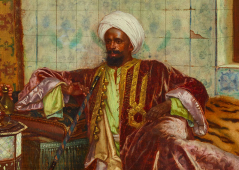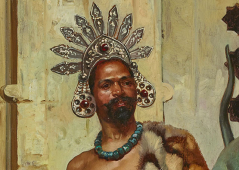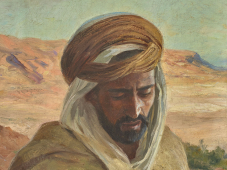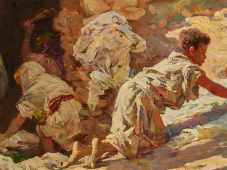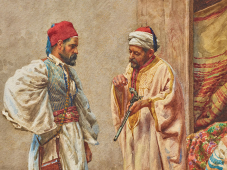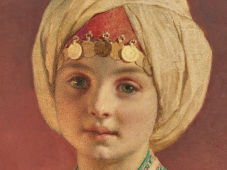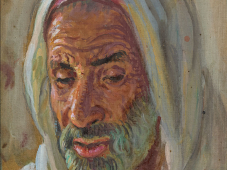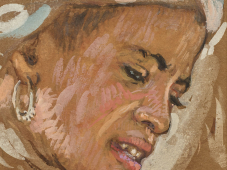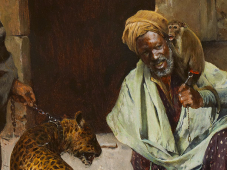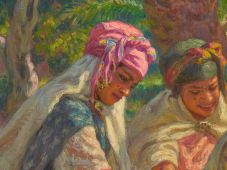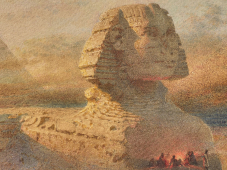The farrier
Description of the artwork
In the shaded courtyard of a palace, the emir holds the reins of his beautiful white stallion, who waits calmly while his hooves are trimmed. Two men are busy at work. One, wearing a leather apron, holds the horse's foot with both hands, while another stands opposite him, wielding a sharp tool. On the ground, we can already see the first traces of the cut.
Rudolf Ernst's infallible technique immediately transports us into this moment of tension. The stallion's lowered ears betray his nervousness despite his apparent calm, and the powerful stance of the two men, knee to knee, reveals the important work of precision and strength they are engaged in. All this takes place under the demanding and serious gaze of the master. His clothes, with their many shimmering reflections, immediately catch the eye and reveal his social status.
Rudolf Ernst deploys all his virtuosity to depict the different materials that make up his canvas. The tree, whose shape seems to mirror that of the building, the tiles surrounding the door, the craftsmen's tools and the fabrics are perfectly depicted by the painter, who manages to enhance them by playing with the effects of light.
This subject is exceptional because it is very rarely treated in Orientalist painting. Nevertheless, there are a few works on this theme, notably a painting by Eugène Delacroix, now in the Louvre Museum, dated 1853, depicting two Arabs shoeing a horse. Although Ernst's composition is very different, he captures a fundamental element of everyday life with this subject.
75008 Paris, France
Saturdays from 2 to 7 p.m.



